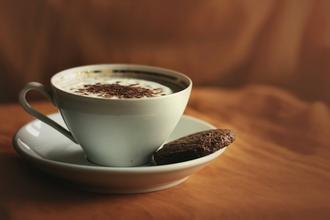Sweet and sweet, rose summer coffee estate. Variety, flavor, taste.
Acatenango is located in Chimaltenango province, Guatemala. More than 5000 hectares of coffee farms in the region have fertile volcanoes, mainly located in two major volcanic mountains, and almost all have forests and shade trees. As can be seen from the above photos, almost all of the estates are shaded and planted, and the main varieties are bourbon and some Catuai and Caturra.
Akatilango two major volcanoes, Volcan de Fuego and Volcan Acatenango respectively, especially Acatenango is the third peak of Central American volcanoes, and across the Fuego volcano is the Yatitan Lake region. The annual rainfall in this area is 48 to 72 inches, and the average annual temperature is 14 ~ 31 degrees C. the temperature difference is large enough, so the density of beans is compact, which is helpful to the flavor. The coffee harvest season is mainly from mid-January to March. At present, the Kaqchiquels people still live in this area and maintain traditional farming methods; in total, there are about 4000 farmers in this area, and coffee cultivation dates back to 1880.
In 1931, it was exported to Kenya in obscurity from Geisha Mountain Mountain in southwestern Ethiopia, wandered to Tanzania and Costa Rica, was transplanted to Panama in the 1960s, and then went through nearly half a century before it became a blockbuster, beating the victorious armies of Bourbon, Kaddura, Kaduai and Tibika to win the first prize of the Panamanian National Treasure Bean Cup Test Competition in 2005, 2006 and 2007. In 2007, the International famous Bean Cup Test sponsored by the American Fine Coffee Association (SCAA) won the championship again, and the bidding price was sold at US $130 per pound, setting a record for the highest price in the history of competition beans. It is reported that the later Panamanian national treasure bean competition will be divided into two groups: Rose Summer and non-Rose Summer, so as not to be robbed of the brilliance of other varieties by Rose Summer. Ruoxia is a member of the Tibika family, but it has become famous after leaving Ethiopia for more than 70 years, and it has fulfilled the saying that Ethiopia is a treasure trove of Arabica genes. it is enough to make waves and roses in the coffee market. The dry aroma of rose summer is very bright, with the characteristics of rose and jasmine, pomelo and citrus aromas, light baking with nutty aromas. The wet aroma also has the smell of hazelnut, and more floral characteristics emerge. In terms of taste and flavor, compared with the previously rising aroma, it may be slightly mild and subtle in the early stage, and the flower and fruit flavor will gradually increase as the temperature drops, and the cold aroma is excellent (sweet preserved fruit, rose fruit, orange glaze jam, strawberry jam, silk pine, cherry, vanilla and rose gradually fade, leading to lemon-flavored fruit). This is a coffee that can be praised by a large number of adjectives, which is testing the brightness of this coffee, especially in the case of light roasting in 1924, the Swede Haines. Elliott founded Esmeralda Farm, which was not a coffee grower but a ranch. Forty years later, Daniel Lou in 1964. Mr. Bidarson's grandfather, Luther Ruffer. Mr. Bidarson bought Esmeralda Farm in order to have an old home after retirement, grandfather Luthor. Mr. Bidasson was born in Sweden and served as president of the Bank of America and director of United Nations Development.
His son Blaise. Mr. Bidarsson moved to Panama from California in 1973 and inherited his father's farm. In 1987, he converted most of the farm to growing coffee. In 1994, he invested in the machinery and equipment of refined coffee to create a brand. While Mr. Bidarson and his wife Susan started a formal business on the coffee farm, they also raised three children, Elligo (born in Philadelphia in 1966), Rachel (born in Sweden in 1967) and Danielu (born in Panama in 1974).
In 1996, Blaise and Rachel visited a farm for sale in the Haramijun area of the Bocketi Valley, and was attracted by the beautiful farm and immediately bought it. This is Esmeralda? Daniel Lou, the third son of Haramiqiong Farm. It is in this farm that Mr. Bidasson has grown Geisha coffee, which has attracted the attention of the coffee world.

Important Notice :
前街咖啡 FrontStreet Coffee has moved to new addredd:
FrontStreet Coffee Address: 315,Donghua East Road,GuangZhou
Tel:020 38364473
- Prev

Introduction to the characteristics and Flavor of Ethiopian Coffee Manor with Mocha refreshing Flavor
Ethiopian coffee beans grow in close to the natural environment, after years of planting under the same growth conditions, Ethiopian coffee beans have gradually adapted to the environment here. More than 60% of coffee beans are grown in forests or semi-forests. Large-scale coffee-growing villages account for about 35% of the country's total coffee production. Many of these are used.
- Next

Introduction to the characteristics of flavor varieties in Bolivian coffee manor with high quality and rich sour taste
On December 18, 2005, the presidential election was held. Aymara Indian, Evo Morales, leader of the Bolivian socialist movement, won the election with 53.75% of the vote and took office on January 22, 2006. He became the country's first Native American president and Bolivia's first left-wing president. Began with progressive community socialism (that is, Indian socialism)
Related
- Detailed explanation of Jadeite planting Land in Panamanian Jadeite Manor introduction to the grading system of Jadeite competitive bidding, Red bid, Green bid and Rose Summer
- Story of Coffee planting in Brenka region of Costa Rica Stonehenge Manor anaerobic heavy honey treatment of flavor mouth
- What's on the barrel of Blue Mountain Coffee beans?
- Can American coffee also pull flowers? How to use hot American style to pull out a good-looking pattern?
- Can you make a cold extract with coffee beans? What is the right proportion for cold-extracted coffee formula?
- Indonesian PWN Gold Mandrine Coffee Origin Features Flavor How to Chong? Mandolin coffee is American.
- A brief introduction to the flavor characteristics of Brazilian yellow bourbon coffee beans
- What is the effect of different water quality on the flavor of cold-extracted coffee? What kind of water is best for brewing coffee?
- Why do you think of Rose Summer whenever you mention Panamanian coffee?
- Introduction to the characteristics of authentic blue mountain coffee bean producing areas? What is the CIB Coffee Authority in Jamaica?

